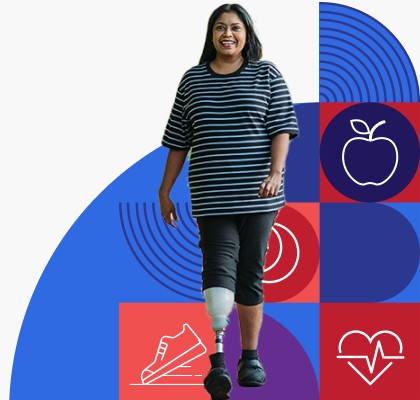
Regular physical activity is good for everyone’s health, including people with disabilities. Getting active can help you:
- Strengthen your heart
- Build strong muscles
- Lower stress
- Boost your mood
- Improve symptoms of anxiety or depression
Before you start:
- Talk to your doctor about the types and amounts of physical activity that are right for you. If you’re taking medicine, be sure to find out if it can affect how your body responds to physical activity.
- It’s also a good idea to talk to a trained exercise professional. Find a gym or fitness center near you that’s comfortable and accessible. Ask if they have experience working with people with similar disabilities. Talk to your doctor if you need help finding a trained exercise professional.
Aim for 150 minutes a week of moderate-intensity aerobic activity.
- Choose activities that make your heart beat faster — like walking fast, wheelchair walking, swimming, or raking leaves
- Start slowly and do what you can — even 5 minutes of physical activity has real health benefits, and you can build up to more over time
Do muscle-strengthening activities at least 2 days a week.
- These include activities like push-ups or lifting weights. Pick activities that work for you.
- You may need someone to help you do certain muscle-strengthening activities — talk with your doctor or a trained exercise professional if you think you need help
- If you can, try working on the muscles that you use less often
Find support and stick with it.
- Bring a friend along, especially if you’re trying out a new activity
- If you don’t meet your physical activity goal, don’t give up — you can try again tomorrow
- Be active according to your abilities — remember, any amount of physical activity is better than none!
